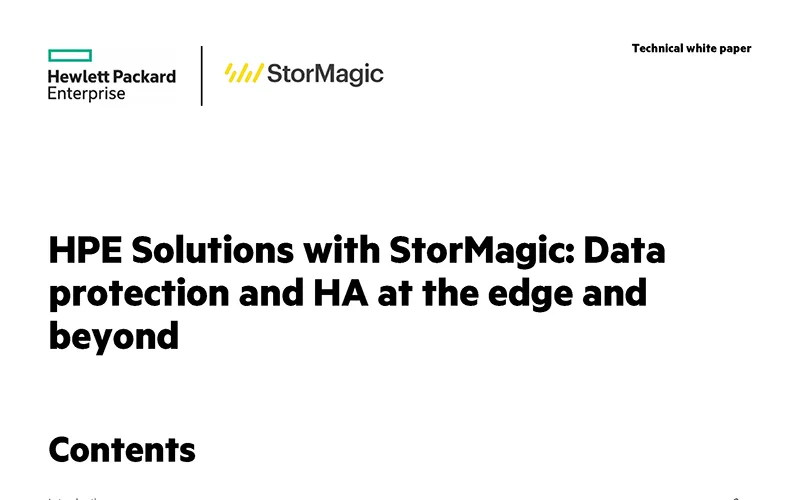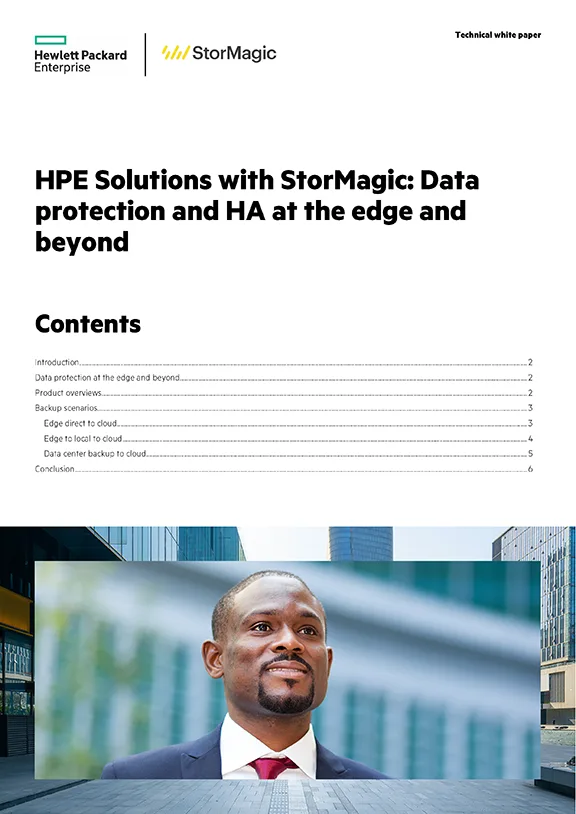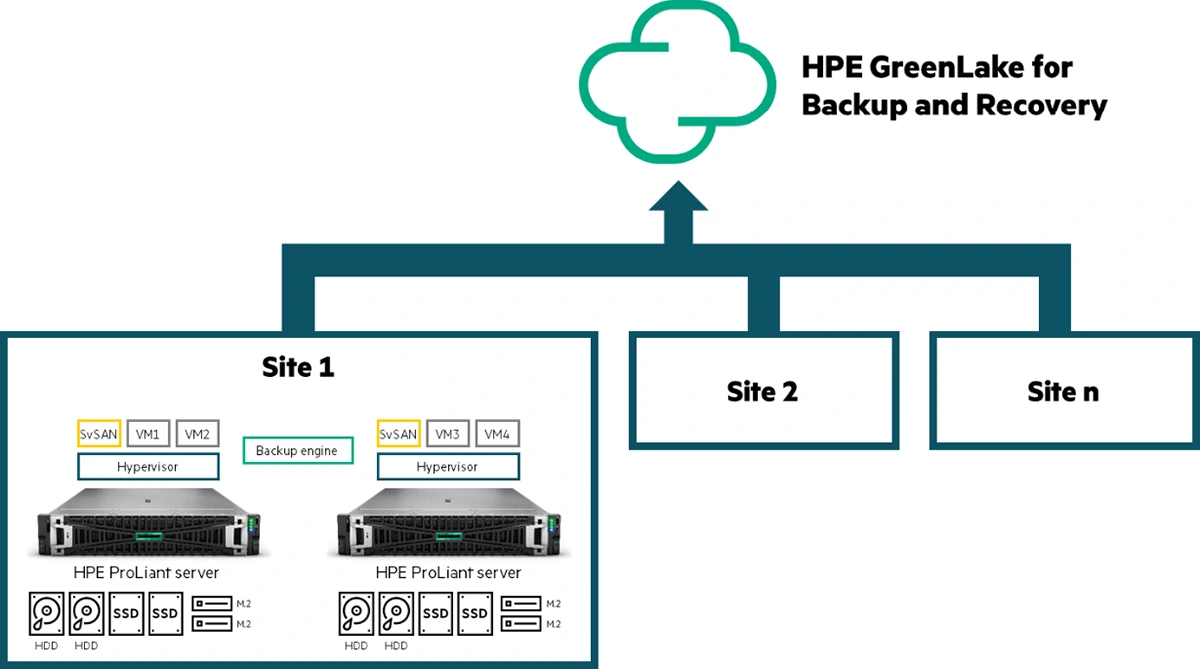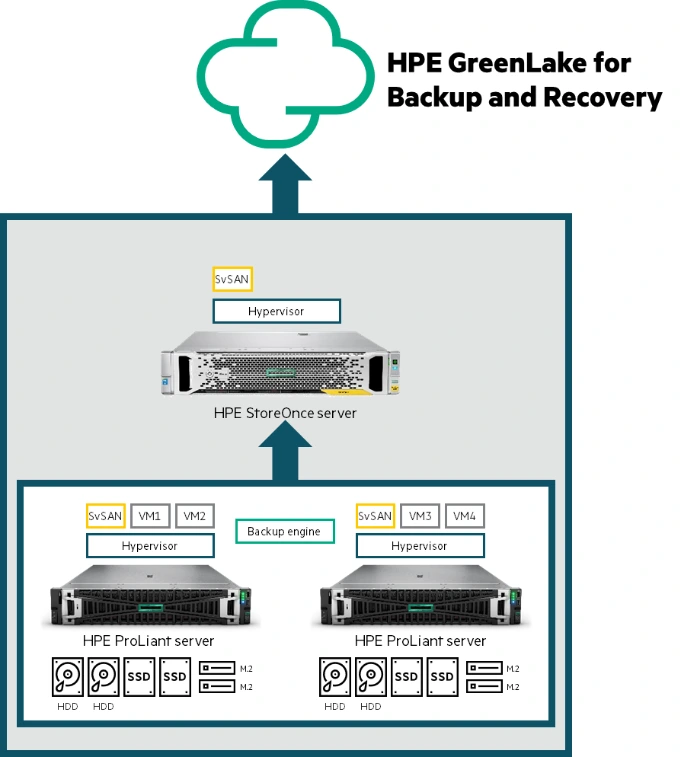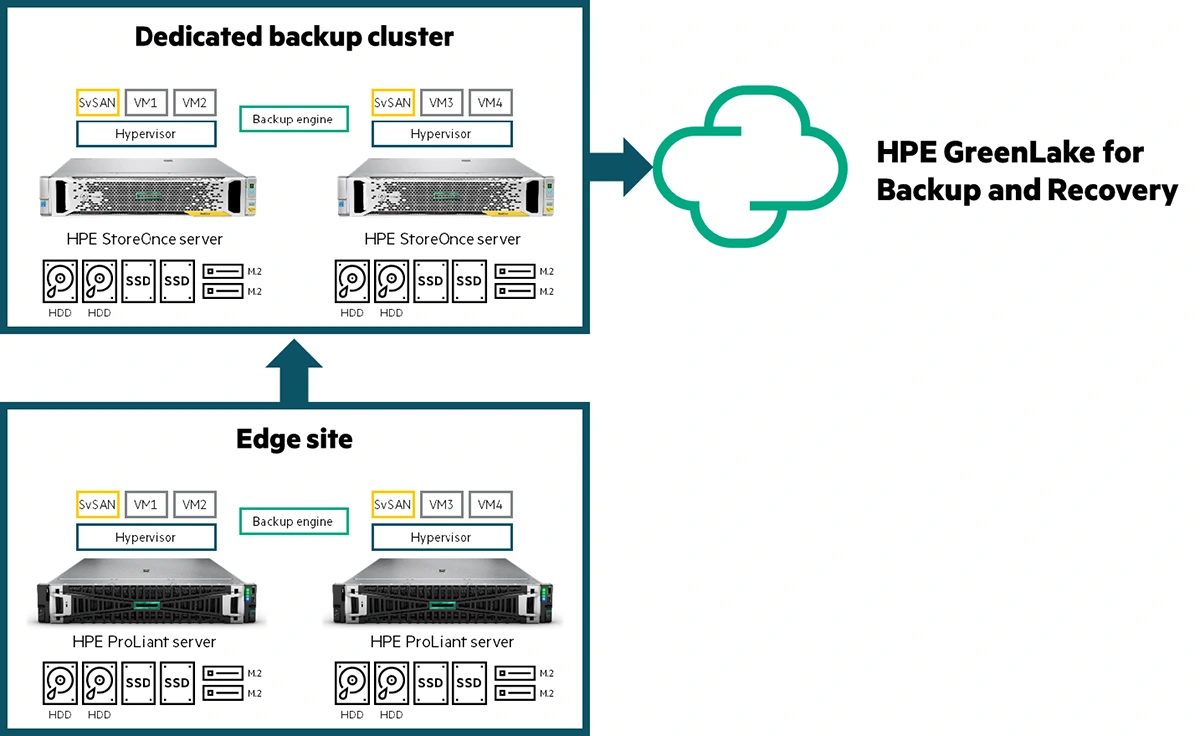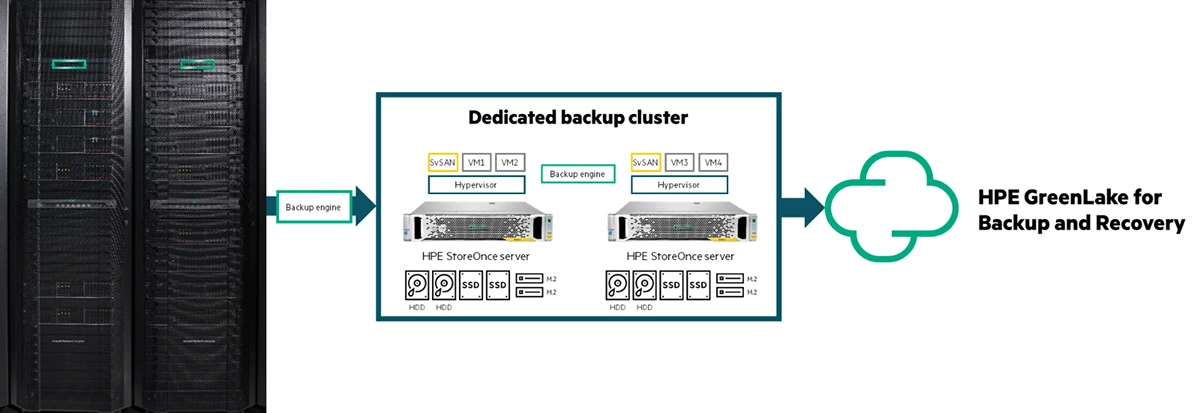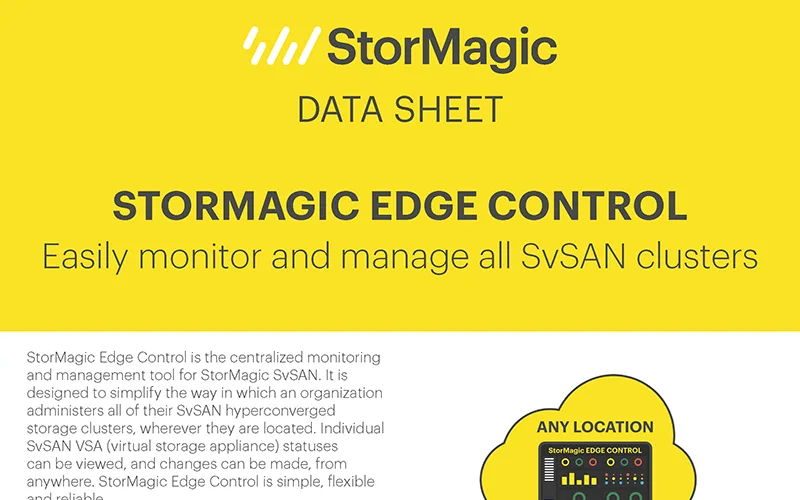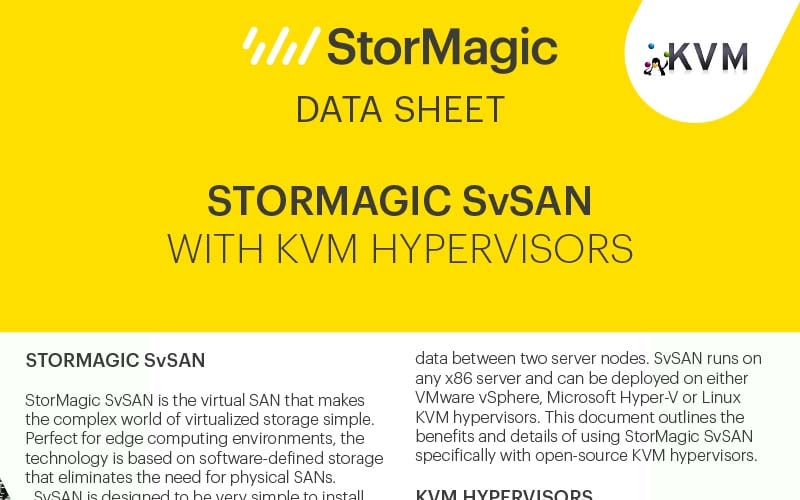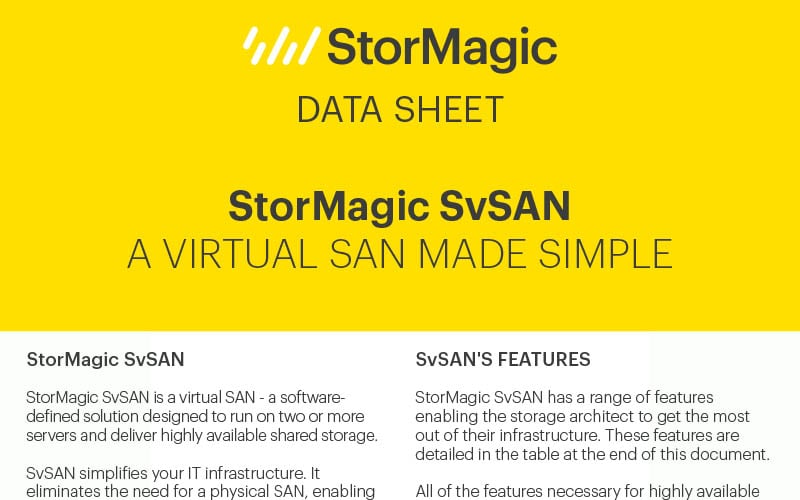Digital transformation is underway across almost every industry, regardless of organization size. Some adopted early and are seeing the benefits, including the uses of new technologies and myriad of data and insights provided. Others are earlier in the process, with some implementations in place and others on the horizon.
Much of the digital transformation starts at the edge, where technologies can capture data closest to the customer, the process, or the event. It allows information to be gathered, analyzed, and acted upon in real-time to provide the best and quickest outcomes. However, there is so much data that not all of it can, or should, be acted upon immediately. For example, a sensor that determines “all is well” does not require action or analysis. However, when “all is not well,” that is when action and perhaps further analysis are required.
Similarly, not all analysis must happen immediately. The fact that red sweaters are selling well in Topeka and Toledo is important and may indicate a trend worth pursuing. However, the analysis can happen together, with other regional, consumer, and related data, not when someone buys a red sweater. The distinguishing features of any data — its importance, urgency, and the associated outcomes and actions — lead organizations to decide where, when, and how to process and protect their data.
Modern architectures supporting digital transformations are often some combination of computing at the edge, on-premises data centers, and/or private, hybrid, or public clouds. However, an overriding tenet of any architectural decisions must be the protection and preservation of the valuable data created and stored, be that at the edge, in the data center, or in the cloud. Without data availability, protection, and recoverability, the full benefits of digitizing are difficult to achieve.
Data protection at the edge and beyond
Hewlett Packard Enterprise and StorMagic provide products and services that enable and complement the digital transformation of any organization. Running as a virtual storage appliance (VSA) on HPE systems, StorMagic SvSAN provides high-availability storage at the edge. HPE backup products and as-a-service offerings, such as HPE GreenLake for Backup and Recovery and HPE StoreOnce provide simple, yet powerful backup and recovery options for data at and from the edge.
Product overviews
StorMagic SvSAN: Simple, flexible, and reliable, SvSAN turns the underlying storage of any x86 server into highly available shared storage within clusters of two servers (nodes) or more. SvSAN sits on top of the hypervisor as a guest virtual machine (VM) and is hypervisor agnostic, supporting VMware vSphere®, Hyper-V, and KVM.
SvSAN’s hyperconverged storage works through active-active synchronous mirroring between two servers. This ensures there is always an exact copy of data on each server. If one server suffers a failure or is taken offline for maintenance, the remaining server continues to operate without any disruption in service to the organization. There is no downtime.
Providing highly available shared storage on just two nodes is a defining feature of SvSAN. This is enabled using a very lightweight witness service, which can be sited locally, remote to the cluster, or as a service, and provides a quorum for up to one thousand clusters at a time.
HPE GreenLake for Backup and Recovery: Is a data protection service accessed through the HPE GreenLake edge-to-cloud platform. It delivers the protection available using traditional backup software without the management costs and complexities. Delivered as a service means there is no need to manage software updates or compatibility with backup storage. This enables consistent protection of on-premises VMware® virtual machines (VMs), Microsoft SQL Server databases, and cloud-native workloads (such as Amazon EBS volumes, EC2 instances and RDS) with Global Protection Policies that define the organizations’ recovery and retention requirements.
The HPE GreenLake platform is secure with built-in protection from ransomware and other threats. In case of an unintended deletion, data loss through an infrastructure outage, or a ransomware attack, data can be rapidly recovered to a known good point in time, in line with the service-level commitment to the organization.
HPE StoreOnce: Is a purpose-built backup appliance designed to store copies of backup data in deduplicated form, thereby reducing the backup storage footprint by as much as 95%.1 The system delivers high-performance backup and recovery to protect rapidly growing data sets while enabling fast data recovery when needed. HPE StoreOnce is available in two deployment models — physical single-node appliances (HPE StoreOnce Systems) or a virtual storage appliance (HPE StoreOnce VSA).
The HPE StoreOnce systems can be used to provide storage for on-premises backups managed by HPE GreenLake for Backup and Recovery.
Customer challenges
Customers in all industries and of all sizes should consider these realities when considering data availability, backup, and recovery options:
- Ransomware attacks leading to unrecoverable data events; must be focused on security and protecting data.
- As industries continue to transform digitally, the demands on IT always increase as more shift toward a hybrid cloud.
- With storage requirements increasing rapidly, there’s a need to plan for future growth while maintaining highly available data and apps.
- Fit for purpose and effective backup solutions, which meet the customer’s budget and are easy to deploy and maintain, eliminate single points of failure and connectivity.
- It includes the use of best practices — 3-2-1 backup strategies — 3 copies, 2 different types of media, and 1 off-site copy.
- It reduces complexity with integrated solutions delivered by one vendor.
Backup scenarios
There are many scenarios and architectural solutions to protect data at and from the edge with HPE and StorMagic. These examples demonstrate various configurations to utilize SvSAN running on HPE systems to provide data availability and to protect data via backup and recovery options further.
Edge direct to cloud
This scenario is an example of a large-scale remote office/branch office ROBO) customer looking for minimal on-prem hardware. Instead of a small commodity NAS system on-prem, the edge direct-to-cloud solution removes its need, reducing support and complexity.
Key products: HPE GreenLake for Backup and Recovery, HPE servers, StorMagic SvSAN
The solution backs up edge sites directly to the cloud without additional on-site hardware requirements. It helps to lower CapEx while keeping deployment simple and repeatable across multiple sites. It does increase OpEx and creates a longer recovery time since the backup data is stored off-site.
Figure 1 is an edge direct-to-cloud backup example where edge sites communicate directly to HPE GreenLake for Backup and Recovery without any additional on-site hardware.
Edge to local to cloud
This scenario applies to large-scale ROBO/edge customers and smaller enterprises. In this case, SvSAN stores both the VM data and backup storage for the same hosts. It can be accomplished with SvSAN as a VM storage volume with a third dedicated backup node (A), an additional cluster (B), or within the systems (C).
Key products: HPE GreenLake for Backup and Recovery, HPE StoreOnce, HPE servers (primarily, HPE ProLiant), StorMagic SvSAN
The solution creates an on-site backup target and a cloud backup target to reduce OpEx and allows faster recoveries in case of a data restore. It requires more hardware on-site, which increases complexity and initial up-front cost.
Use case A: In this use case, the HPE and StorMagic HCI cluster at the edge site would backup data to a local repository using the HPE GreenLake backup engine. This local repository could be a single-node HPE server with SvSAN providing the underlying virtual storage or any other local disk system available on the network. The next step would be sending data from this cloud repository to the backup engine. This provides faster backups (since the initial backup is local and fast), a local copy for faster recovery, and the added protection of having two backup copies of data.
Figure 2 is an edge direct-to-local-to-cloud backup example (use case A), where edge sites are backed up onto HPE StoreOnce systems and then connected to HPE GreenLake for Backup and Recovery.
Use case B: In this use case, the HPE and StorMagic HCI cluster at the edge site would backup data to a more robust datastore that is provided by a second fully redundant HCI cluster that resides at the same site. The HPE GreenLake backup engine controls the backup. The next step would be for the backup engine to send data from this fully redundant repository to the cloud. Similar to use case A, this step provides a local copy for faster backup and restore times, an extra copy for added protection, and additional uptime on the local data repository. In case a server was to fail, the backups would still be active and available.
Figure 3 is an edge direct-to-local-to-cloud backup example (use case B), where edge sites are backed up onto a cluster of HPE StoreOnce systems and then connected to HPE GreenLake for Backup and Recovery.
Use case C: In this use case, a local backup is still being created before being sent to the cloud, but instead of landing the backup on a separate repository it uses the same HCI cluster. Here, the storage in the two-node cluster is configured such that some of the available capacity is allocated to running VMs, and some are dedicated to landing the backups. The downside of this solution is that if both edge servers failed, the backups would not be available for restoration. However, this scenario saves the customer money because they don’t have to purchase, install, and manage a separate server/storage solution.
Figure 4 is an edge direct-to-local-to-cloud backup example (use case C), where edge sites are backed up onto a separate repository within the same HCI cluster and then connected to HPE GreenLake for Backup and Recovery.
Data center backup to cloud
This scenario uses SvSAN as the backup target and can be deployed as a stretched cluster. Stretched clusters allow different SvSAN nodes (servers) to be distributed across buildings, campuses, and metro areas and are a valuable way to reduce or eliminate service interruptions from both local and regional disasters. The nodes can be up to 1,000 km apart and tolerate latency of up to 10 ms.
Key products: HPE StoreOnce, HPE servers (primarily, HPE ProLiant), and StorMagic SvSAN
This solution offers a highly available and synchronously mirrored backup target, which can be stretched across multiple locations. It provides customizable backup targets but requires the heaviest on-prem solution at more cost when compared to the others.
Figure 5 is a data center backup-to-cloud backup example where a data center is backed up to an HPE StoreOnce cluster and then connected to HPE GreenLake for Backup and Recovery.
Conclusion
Digital transformation allows organizations of all types and sizes to utilize more and more data both efficiently and effectively — to gain insights and provide real business outcomes faster and better than ever before. To do so, however, requires that data be available and always protected from inception and throughout its lifecycle.
HPE and StorMagic provide solutions that help ensure data is available, backed up, and recoverable and they do so with minimal complexity and cost. Organizations can find the solution that best fits their needs.

